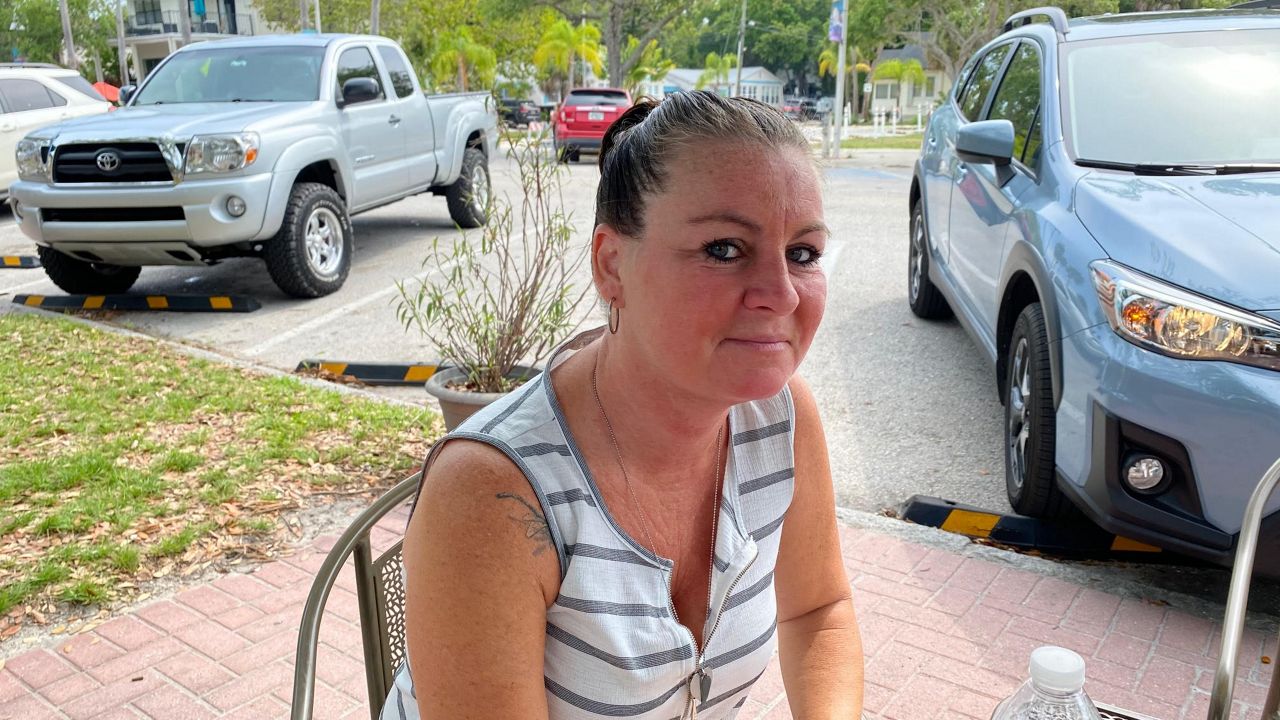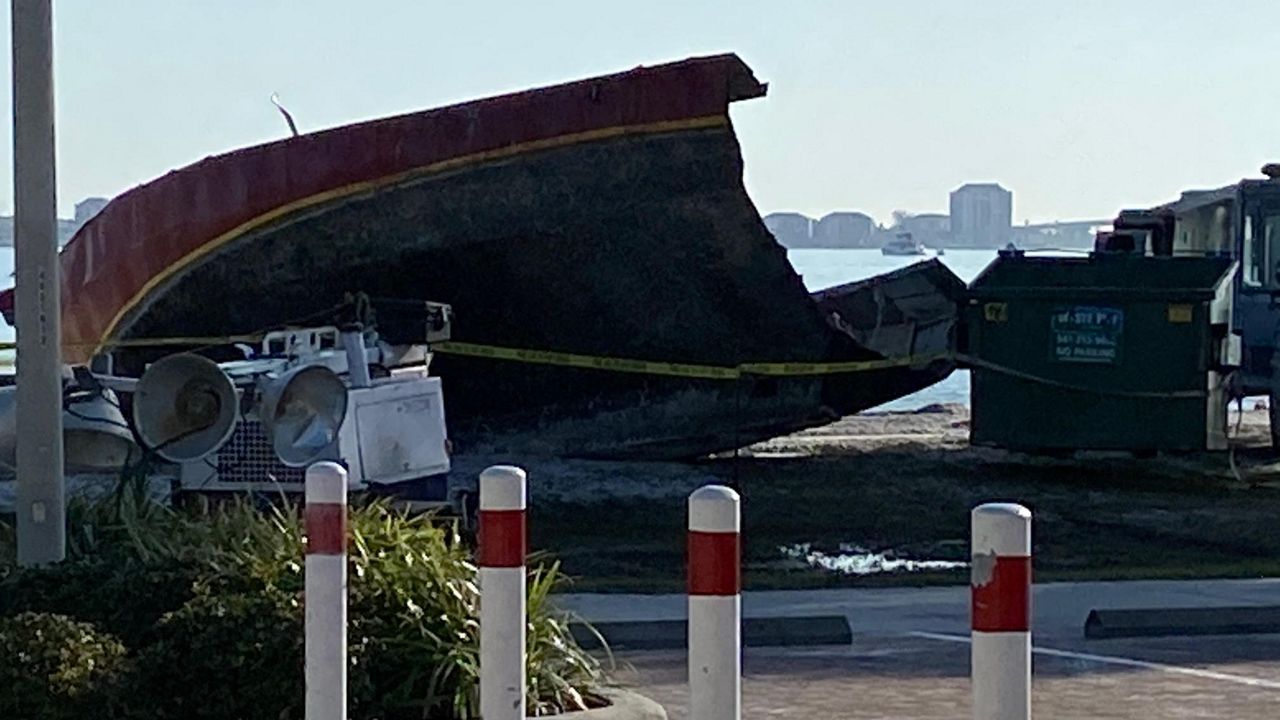GULFPORT, Fla. — Last November, when Tropical Storm Eta sideswiped the southwestern Pinellas County coast, its winds and rain combined with a high tide to wreak hurricane-level havoc on seaside municipalities like Gulfport, St. Pete Beach and Madeira Beach.
“I remember when [2017’s Hurricane] Irma was suddenly a Category 5, and nothing happened to my house,” says Jackie Schiapo, a transplanted Rhode Islander who rented a house on Madeira Beach for four years before Eta struck.
What You Need To Know
- Hurricane season begins June 1
- Tropical Storm Eta caused unexpected flooding and damage in November 2020
- Gulfport Marina is adjusting its mooring guidelines to help prevent sailboats from breaking loose
- One Madeira Beach resident recalls her harrowing Eta experience
- Latest Storm Season 2021 News
But she lost everything on the night of Wednesday, November 11, 2020.
“A friend calls me while I’m cooking dinner to ask how the water is over here because it’s a moon tide, and sometimes the water comes up the street,” she says. “And it’s fine. And not ten minutes later the water is just rushing in the doors.”

Schiapo tried to stop the flooding with pillows and other household implements; eventually, she gave up on remaining in the house, and she and her American bulldog Butch left through a window, taking only a framed photo of her late son. They found themselves on the deserted street, in the dark, trudging through water higher than her knees.
“I called 911, they said, ‘We can’t get to you,’” she says.
A charitable stranger in a lifted pickup truck took them in, though she says he told her she might not like it where he was going. According to Schiapo, she spent the next five hours in a drug house, leaning against a wall quietly with Butch while partiers filtered in and out. In the morning, her rescuer returned her to her house, where she found most of her possessions ruined.
“You know how you see Hurricane Katrina on TV? It felt like that,” she says.
While Schiapo’s story is weirder than most, many of Pinellas County’s coastal residents were caught off guard by the damage done by a tropical storm that didn’t even make landfall in the area. Thousands went without power, homes and businesses were flooded, and six large sailboats famously broke free of their moorings in Boca Ciega Bay and ended up against the seawall or on the beach in Gulfport. Some remained there for weeks, and cost the city plenty to remove.

“For ungrounding, it’s usually around $100-150 per foot to unground a vessel, depending on the situation,” says Gulfport Marina Harbormaster Dennis Frain. “The ones that did have insurance were moved a lot quicker, of course, than the ones that didn’t. The ones that abandoned the boats, the city had to either move internally or hire a contractor… We had to have a steel-hulled boat removed, [the city] had a contract and we were able to piggyback on their rates, but they had to physically cut the vessel into thirds and then remove the vessel by crane and by truck because it weighed something like 80,000 pounds.”
As the first of June looms, Frain says he hasn’t heard much chatter around the marina among residents or visitors over approaching this year’s hurricane season any differently. The marina itself, however, is definitely taking steps.
“We are trying to educate [boat owners] that the moorings will hold, but what fails is the line from the boat to the mooring,” he says. “If someone signs up to stay for up to six months, we’re going to go out there to make sure the line is sufficient. And beginning June first, we’re going to be making it mandatory that if the line is not the right size, they need to either replace it or untie from the mooring.”
St. Pete Beach Mayor Alan Johnson also thinks Eta provided locals with plenty of food for thought.
“I think one of the things people have realized is that it doesn’t take a full-blown hurricane to cause a lot of problems,” he says. “You don’t necessarily need to evacuate, but you need to be very careful, water is the problem. The flooding [during Eta] was the worst we’ve had in 50 years.”
Johnson adds that in Eta’s’ wake, St. Pete Beach is rethinking how to best update its stormwater mitigation systems, and working with consultants to that end.
“We’ve changed how the city looks at it, but we can only do so much so fast,” he says.
Tampa Bay’s coastal denizens can be pretty casual about storm season. After all, the last major hurricane to strike the region directly was 100 years ago, in 1921. As this year’s danger months arrive, it remains to be seen whether the memories of Irma and Eta will be enough for some to up their hurricane season game.
Jackie Schiapo, who currently sleeps on an air mattress on the floor of a one-bedroom apartment in Gulfport, her dog Butch far away in Rhode Island, certainly wouldn’t wish what happened to her on anyone.
“I still have nightmares,” she says.
(Calls to city offices of Gulfport and Madeira Beach were not returned by deadline.)



